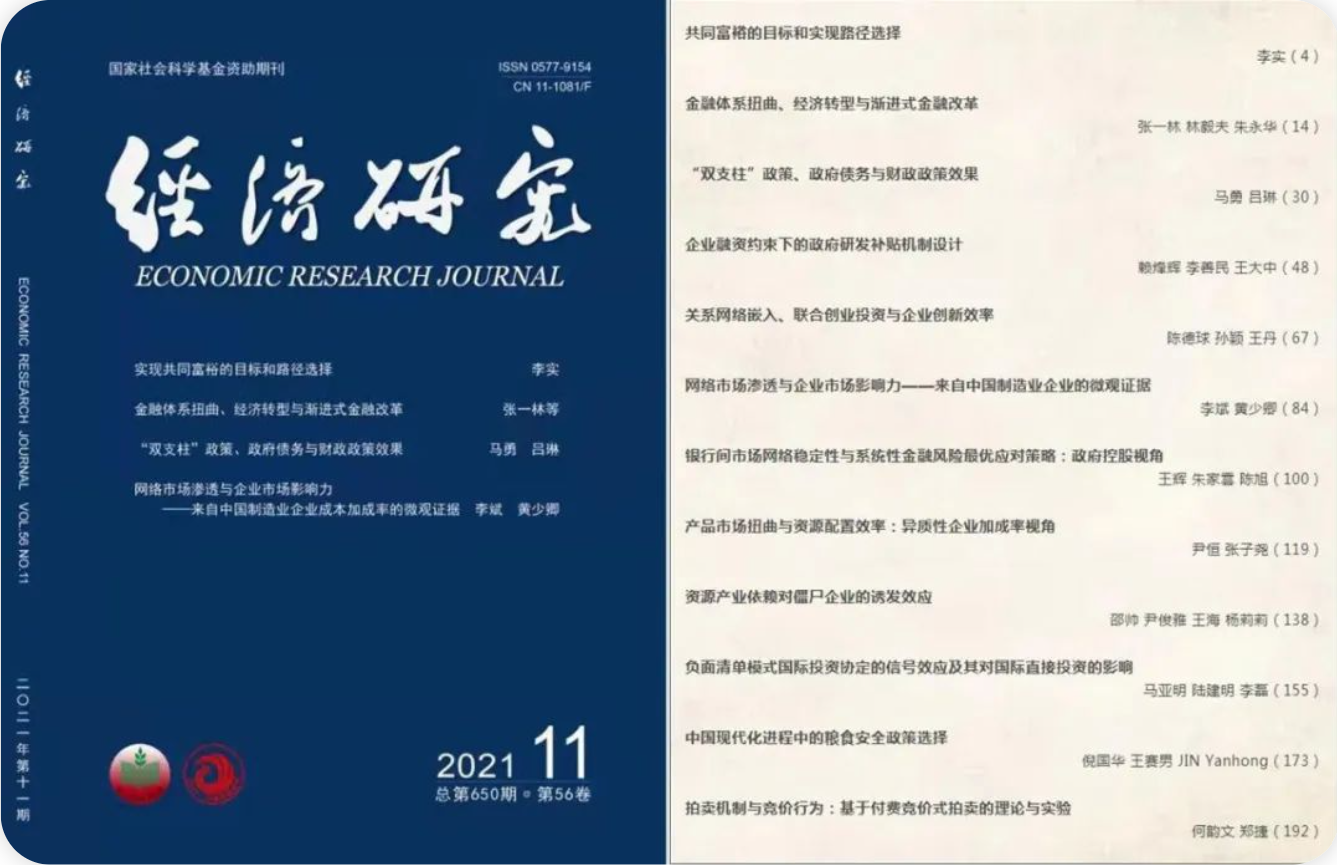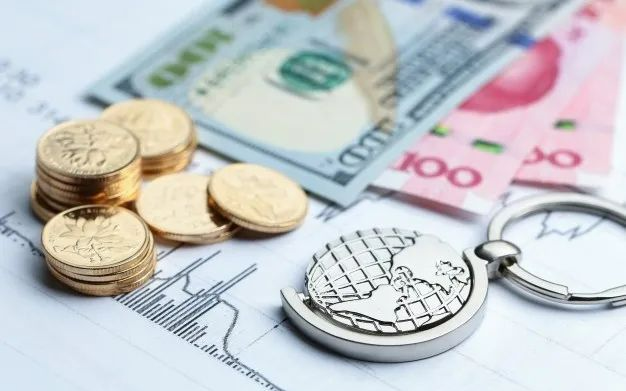岭南观点·28 企业融资约束下的政府研发补贴机制设计
李善民教授、赖峰辉老师、王大中助理教授
近日,我院李善民教授与中山大学管理学院赖峰辉老师、南京大学经济学院助理教授王大中合作的论文《企业融资约束下的政府研发补贴机制设计》于2021年11月在经济学中文顶级期刊《经济研究》发表。

补贴产业关键核心技术研发可提升产业链价值创造能力。在科创企业面临融资约束与政企间存在信息不对称的情境下,如何设计可行补贴机制最大化补贴社会效益,具有重要现实意义。
本文基于机制设计经典分析框架,针对实践中常见的研发前补贴和研发后成本分担两种补贴方式,分别刻画两种补贴方式对应的最优机制,并比较它们产生的社会效益差异。研究发现:融资约束高时,研发前补贴机制可节省企业融资成本实现更高补贴效益;融资约束低时,研发后成本分担机制可节省政府信息成本实现更高补贴效益。混合补贴机制具有效益增益效果。"揭榜挂帅"式竞争性补贴申报机制可实现精准筛选补贴对象、精确设定补贴额度的效果。技术研发成功率较低且技术研发溢出效应较高时,内生决定补贴企业数量的机制更优。
论文的学术贡献:(1)理论方面,论文探究融资约束与支付方式同信息成本的耦合结构,拓展了多元支付方式的机制设计理论。刻画复杂信息环境和补贴企业数量内生决定情形下的最优机制,丰富最优机制设计理论。(2)应用方面,论文为不同政企信息结构、企业融资环境下补贴方式的选择及补贴机制的设计提供参考,为实践中政府优化补贴资金配置提供操作方案。
论文的政策含义:(1)政府应遵循“优胜劣汰”与“雪中送炭”的基本原则安排研发补贴资金。科学评估关键核心技术产业链价值与研发成功概率,并充分利用市场化竞争机制引导企业诚实申报需要的补贴。(2)发挥研发前补贴与研发后成本分担在融资成本和信息成本节约方面的各自优势,采用恰当的补贴机制提升补贴社会效益。(3)逐步完善政企信息沟通机制,降低研发补贴过程中信息不对称造成的扭曲,提高财政研发补贴资金的配置效率和补贴社会效益。

Summary
R&D subsidy serves as an important policy instrument to implement innovation-driven development strategies. Subsidies for R&D of key industrial technologies with considerable amount of input,high risk and significant spillover effect can raise the overall output of the industrial chain and improve social welfare. Statistic data shows that during 2007—2015, nearly 22. 3% of total social R&D investment was in the form of government subsidies in China. On the one hand, governmental R&D subsidies motivate technology firms' R&D investment and improve social welfare. On the other hand, the wrong selection of subsidy targets and inaccurate amount of subsidy are prevalent and lead to low social welfare of subsidies. Therefore, the study of how to design a feasible subsidy mechanism to screen out the right subsidy targets and to set the accurate subsidy amount to maximize the social welfare of subsidies has important practical significance. However, the existing literature has not systematically explored the issue of subsidy mechanism design in the context of coupling of financial constraint and information asymmetry.
This paper adopts the standard mechanism-design approach introduced by Myerson (1981), considers two practically common subsidy modes, namely, pre-R&D subsidy and post-R&D cost sharing,to characterize the respective optimal subsidy mechanisms; it compares their performance difference in terms of social welfare, analyzes the impacts of technology firms' financial constraint and information asymmetry on the social welfare, and designs the optimal subsidy mechanism with the mixture of pre-R&D subsidy and post-R&D cost sharing to improve social welfare. This paper can provide theoretical guidance and implementation solution to optimize the R&D subsidy policy.
The research results of this paper are as follows. (1) The pre-R&D subsidy has the advantage of decreasing financing cost of technology firms, while the post-R&D cost sharing mechanism can save the government's information cost. (2) If the financial constraint of technology firms is low, then the post-R&D cost sharing mechanism outperforms the pre-R&D subsidy mechanism, and vice versa. (3) The optimal subsidy mechanism with the mixture of pre-R&D subsidy and postR&D cost sharing,which effectively balances financing cost and information cost,can further improve social welfare. (4) A competitive subsidy tender mechanism can be constructed to implement the optimal mechanism by selecting the right subsidy target and providing its accurate amount of subsidy.
The policy implications are as follows. (1) The government should fully consider the complex impact of coupling of firms' financial constraint and information asymmetry between the government and firms, adopt the reliable analysis framework of mechanism design to determine the appropriate subsidy mode and the optimal subsidy policy,in order to select the right subsidy targets and set accurate subsidy amount,thus enhancing the subsidy effect. (2) The subsidy policy should be dynamically adjusted to adapt to technology firms' financial conditions, and the subsidy mode and mechanism should be flexibly adopted to improve social welfare. (3)The government should improve the government-firm communication mechanism,and build a technology firm R&D database to acquire more R&D information,to mitigate the negative effect of information asymmetry on subsidy policy performance.
The contributions are as follows. (1) This paper analyzes the subsidy policy design by the mechanism design approach, investigates the channel of how financial constraint and information asymmetry affect the social welfare of subsidies, and establishes the rules of subsidy targets selection and subsidy amount determination, to provide theoretical guidance for effectively solving the problems of wrong selection of subsidy targets and inaccurate subsidy amount. (2) This paper explores how the coupling of financial constraint and transfer mode influences the virtual surplus formula to extend the theory of mechanism design with contingent transfers, and characterizes the optimal mechanism with multidimensional private information or endogenous amount of subsidy targets to enrich the optimal mechanism design theory. (3) This paper provides theoretical foundations and implementation plans for the choice of subsidy mode and design of subsidy mechanism according to the actual information and financial conditions.

李善民
中山大学岭南学院院长,财务管理专业及金融学专业教授,博士生导师。2001年在美国加州大学Hayward分校做访问学者,2007年8月在哈佛大学商学院学习。2013年7月起任中山大学党委常委、副校长。
主要研究领域:公司金融,兼并与收购,资本市场与公司治理。曾获广东省 “南粤教坛新秀”、“先进会计工作者”称号,教育部 “宝钢教育基金奖”, 农业部科技进步奖、广东省哲学社会科学成果一等奖,入选教育部“新世纪优秀人才支持计划”。



